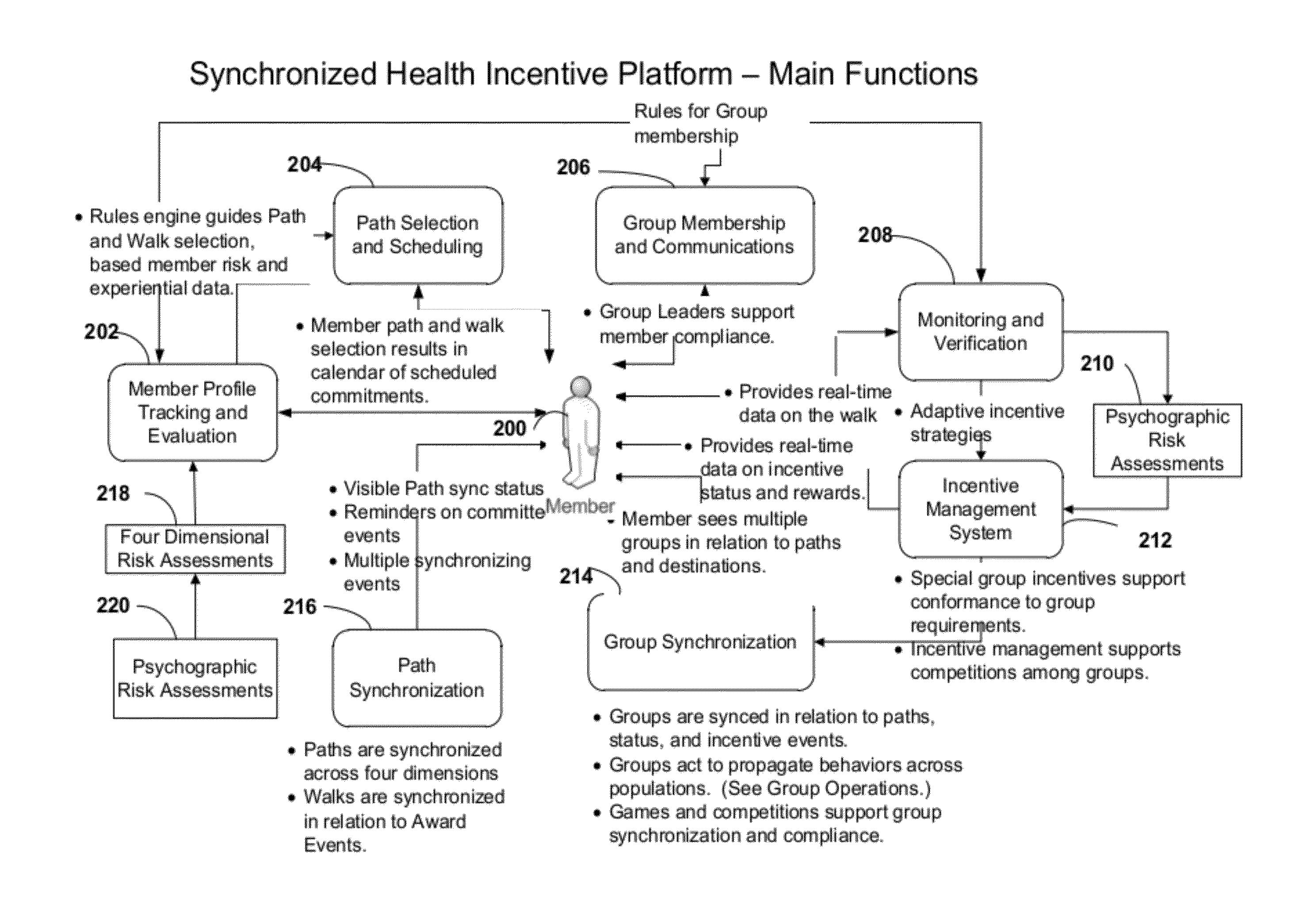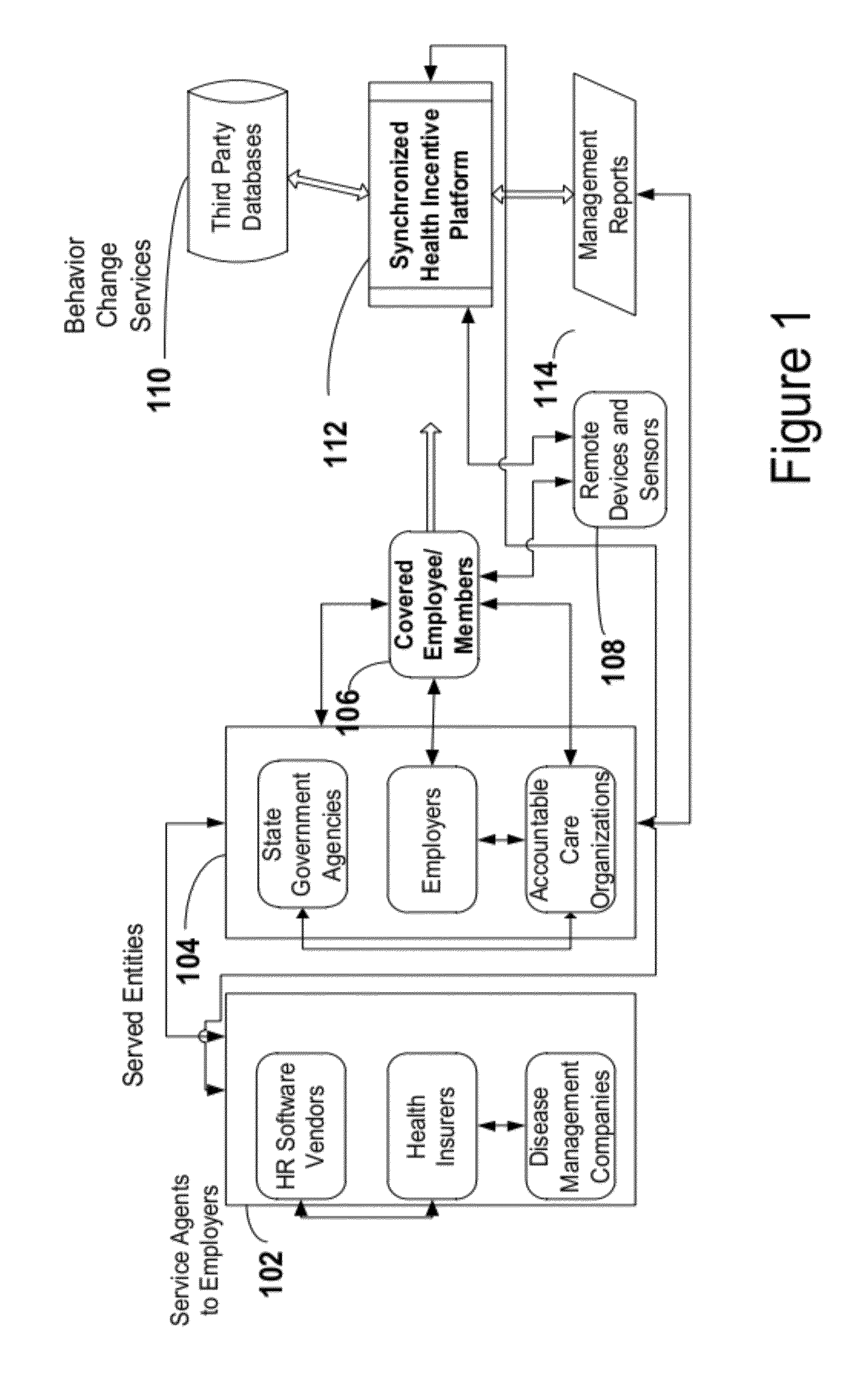System for the synchronization and propagation of health behaviors and management of related incentives
- Summary
- Abstract
- Description
- Claims
- Application Information
AI Technical Summary
Benefits of technology
Problems solved by technology
Method used
Image
Examples
Embodiment Construction
[0048]The invention consists of apparatuses, devices, methods, and processes that form a system designed to alter existing behaviors, implement new behaviors, and support the persistence of behaviors that promote the long-term health and well-being of program participants. In the typical embodiment, The SHIP Program (hereafter, the Program) is implemented in an organization (Served Entities [104]) in FIG. 1 with a substantial number of employees (in excess of 1000). The employer aims to carry out a program to implement behavioral change and reduce associated risk factors related to physical health, financial health, workplace practices, and social engagement. Such a program most commonly aims to encourage employees to adopt behaviors and carry out activities that improve health and reduce costs for treating current and prospective disease conditions. The SHIP Program (system and methods) can be delivered through multiple Service Agents [102], Human Resource (HR) software vendors, he...
PUM
 Login to View More
Login to View More Abstract
Description
Claims
Application Information
 Login to View More
Login to View More - R&D
- Intellectual Property
- Life Sciences
- Materials
- Tech Scout
- Unparalleled Data Quality
- Higher Quality Content
- 60% Fewer Hallucinations
Browse by: Latest US Patents, China's latest patents, Technical Efficacy Thesaurus, Application Domain, Technology Topic, Popular Technical Reports.
© 2025 PatSnap. All rights reserved.Legal|Privacy policy|Modern Slavery Act Transparency Statement|Sitemap|About US| Contact US: help@patsnap.com



